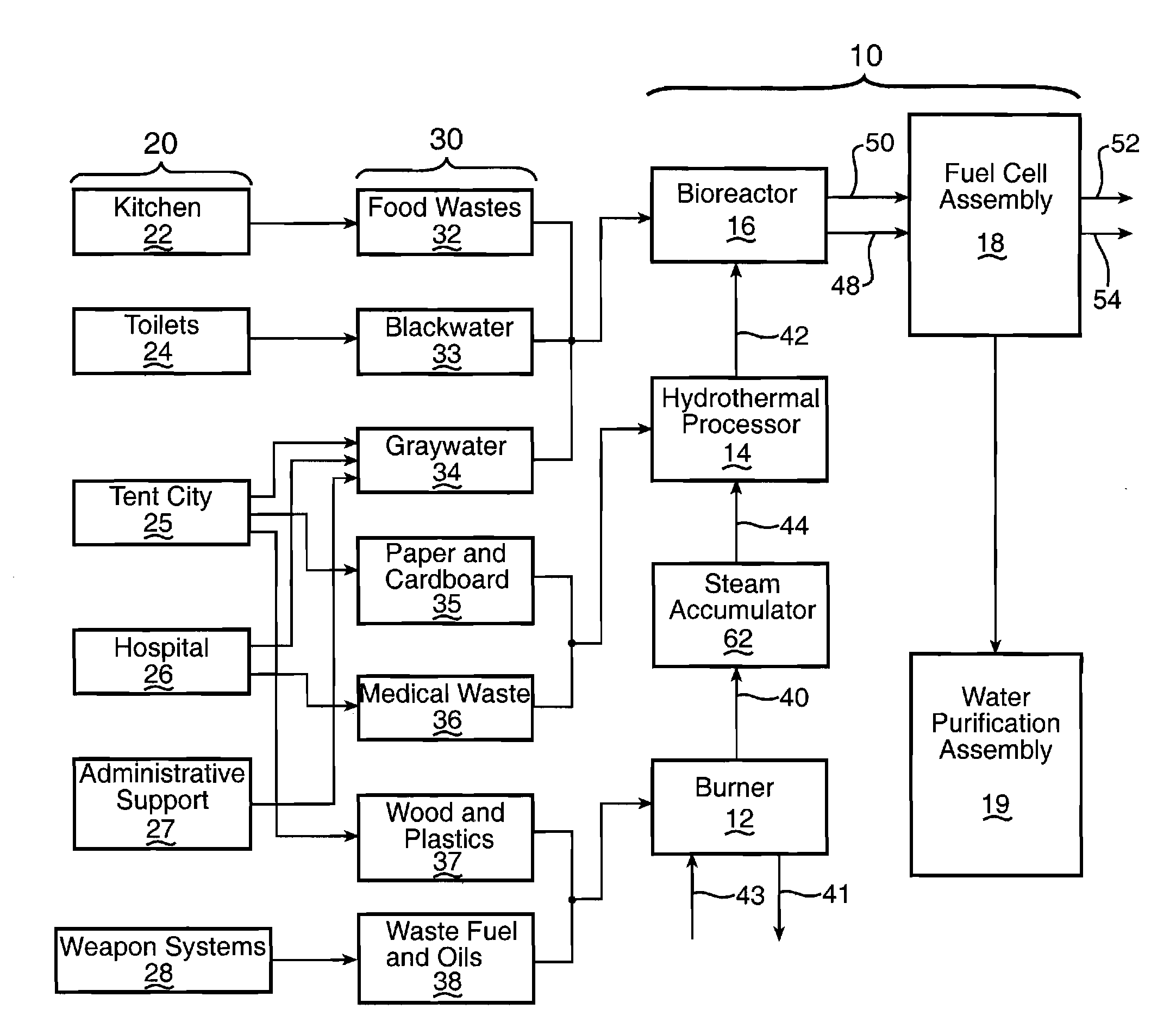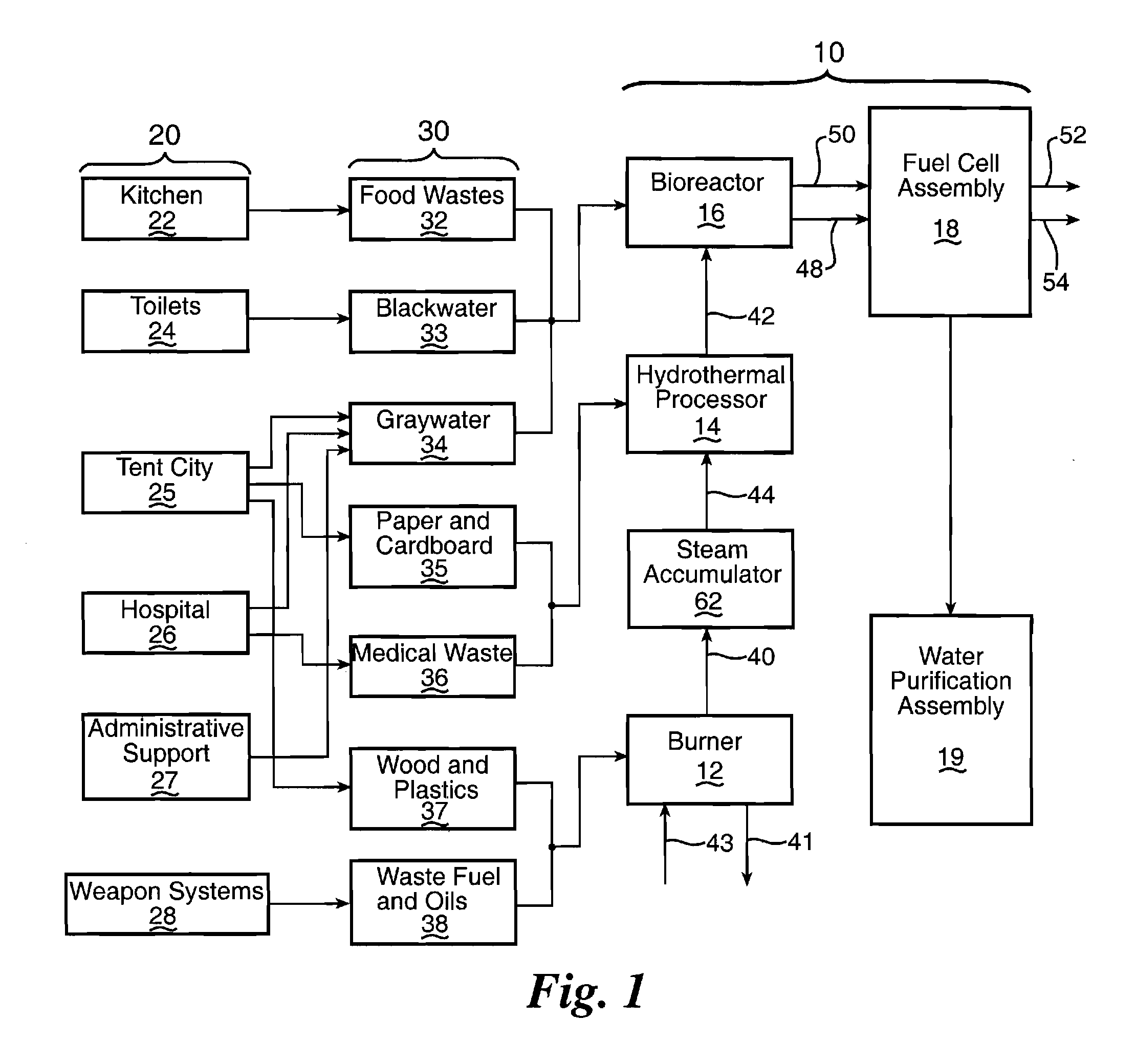Method for consolidated waste management and resource recovery
a waste management and resource recovery technology, applied in the field of integrated waste management and resource recovery system, can solve the problems of generating significant amounts of waste on a daily basis, reducing the efficiency of waste management, so as to maximize the effect of synergies
- Summary
- Abstract
- Description
- Claims
- Application Information
AI Technical Summary
Benefits of technology
Problems solved by technology
Method used
Image
Examples
Embodiment Construction
[0017]FIG. 1 is an example embodiment of a waste management and resource recovery system 10 showing the processing of typical wastes from a deployed airbase. The primary components of system 10 are a burner 12, a hydrothermal processor 14, a bioreactor 16, a fuel cell assembly 18 and a water purification assembly 19.
[0018]Example waste sources 20 include a kitchen 22, toilets 24, a tent city 25, a hospital 26, administration support 27 and weapon systems 28.
[0019]Example wastes 30 from waste sources 20 include food wastes 32, blackwater 33, graywater 34, paper and cardboard 35, medical wastes 36, wood and plastics 37 and waste fuel and oils 38.
[0020]The primary function of hydrothermal processor 14 is saccharification, the process of breaking down a complex carbohydrate, such as starch or cellulose, into its monosaccharide components, such as simple sugars, using hydrolysis.
[0021]The primary function of bioreactor 16 is dark fermentation, fermentative conversion of an organic materi...
PUM
 Login to View More
Login to View More Abstract
Description
Claims
Application Information
 Login to View More
Login to View More - R&D
- Intellectual Property
- Life Sciences
- Materials
- Tech Scout
- Unparalleled Data Quality
- Higher Quality Content
- 60% Fewer Hallucinations
Browse by: Latest US Patents, China's latest patents, Technical Efficacy Thesaurus, Application Domain, Technology Topic, Popular Technical Reports.
© 2025 PatSnap. All rights reserved.Legal|Privacy policy|Modern Slavery Act Transparency Statement|Sitemap|About US| Contact US: help@patsnap.com



